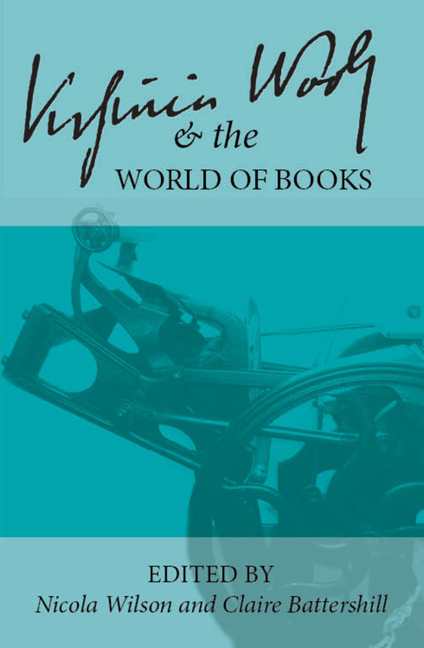 Virginia Woolf and the World of Books
Virginia Woolf and the World of Books Book contents
- Frontmatter
- Contents
- Introduction
- List of Abbreviations
- Keynote
- In the Archives
- A Voice in the Archives: In Search of Woolf's Lost Tape
- On Manuscripts: Virginia Woolf and Archives
- Echo's Voices: Virginia Woolf, Irena Krzywicka, and The Well of Loneliness
- Craftsmanship
- The Hogarth Press
- Hours in A Library
- The Art of the Book
- The Art of the Narrative
- Making New Books: Creative Approaches
- The Book in the World: Woolf's Global Reception
- Editing and Teaching Woolf
- Intertextuality
- Lives in Writing
- Notes on Contributors
On Manuscripts: Virginia Woolf and Archives
from In the Archives
- Frontmatter
- Contents
- Introduction
- List of Abbreviations
- Keynote
- In the Archives
- A Voice in the Archives: In Search of Woolf's Lost Tape
- On Manuscripts: Virginia Woolf and Archives
- Echo's Voices: Virginia Woolf, Irena Krzywicka, and The Well of Loneliness
- Craftsmanship
- The Hogarth Press
- Hours in A Library
- The Art of the Book
- The Art of the Narrative
- Making New Books: Creative Approaches
- The Book in the World: Woolf's Global Reception
- Editing and Teaching Woolf
- Intertextuality
- Lives in Writing
- Notes on Contributors
Summary
When Virginia Woolf visited Haworth in 1904, she was among the few who explored the parsonage. In The Bronte Myth (2004), Lucasta Miller tells us that while the area had become widely advertised as a tourist destination and the museum was open to the public, the parsonage was only open to those with “special permission from the resident clergyman” (114). In “Haworth, November, 1904,” Woolf, as Miller notes, points out that “the personal relics…made one forget ‘the chiefly memorable fact that [Charlotte Brontë]…was a great writer’” (qtd. Miller 112). Woolf frames this contrast with a reference to manuscripts. She stresses: “It is better to read Carlyle in your own study chair than to visit the sound-proof room and pore over the manuscripts at Chelsea.…The curiosity is only legitimate when the house of a great writer or the country in which it is set adds something to our understanding of his books. This justification you have for a pilgrimage to the home and country of Charlotte Brontë and her sisters” (E1 5). Woolf argues that for those interested in literature, material contexts—like manuscripts and houses—are less significant without bearing on texts.
When she came to write about the Brontë Parsonage and museum, Woolf drew on her memory of Carlyle's house, which she had visited with her father in 1897. At the time, she recorded in her diary seeing “Cs sound proof room, with double walls—His writing table, and his pens, and scraps of his manuscripts” (PA 24). Woolf is describing a literal padded work-room that Carlyle had designed. In her sketch, later published as “Carlyle's House,” Woolf remembered “glass cases with specimens of handwriting in the middle of rooms” (CH 3). Handwriting alone, for Woolf, tells little. But both impressions of Carlyle's house miss the opportunity to “pore over” his manuscripts that Woolf included in her piece on the Brontë house. This detail is an exception to the skepticism that she often grants to manuscripts and archives. Five years after “Haworth, November, 1904,” Woolf may have had the opportunity to see Brontë manuscripts first hand. She told Lady Robert Cecil, “I am also promoted to dine with Reginald; and to have the Brontë manuscripts shown me” (L1 397).
- Type
- Chapter
- Information
- Virginia Woolf and the World of BooksSelected Papers from the Twenty-seventh Annual International Conference on Virginia Woolf, pp. 26 - 30Publisher: Liverpool University PressPrint publication year: 2018


